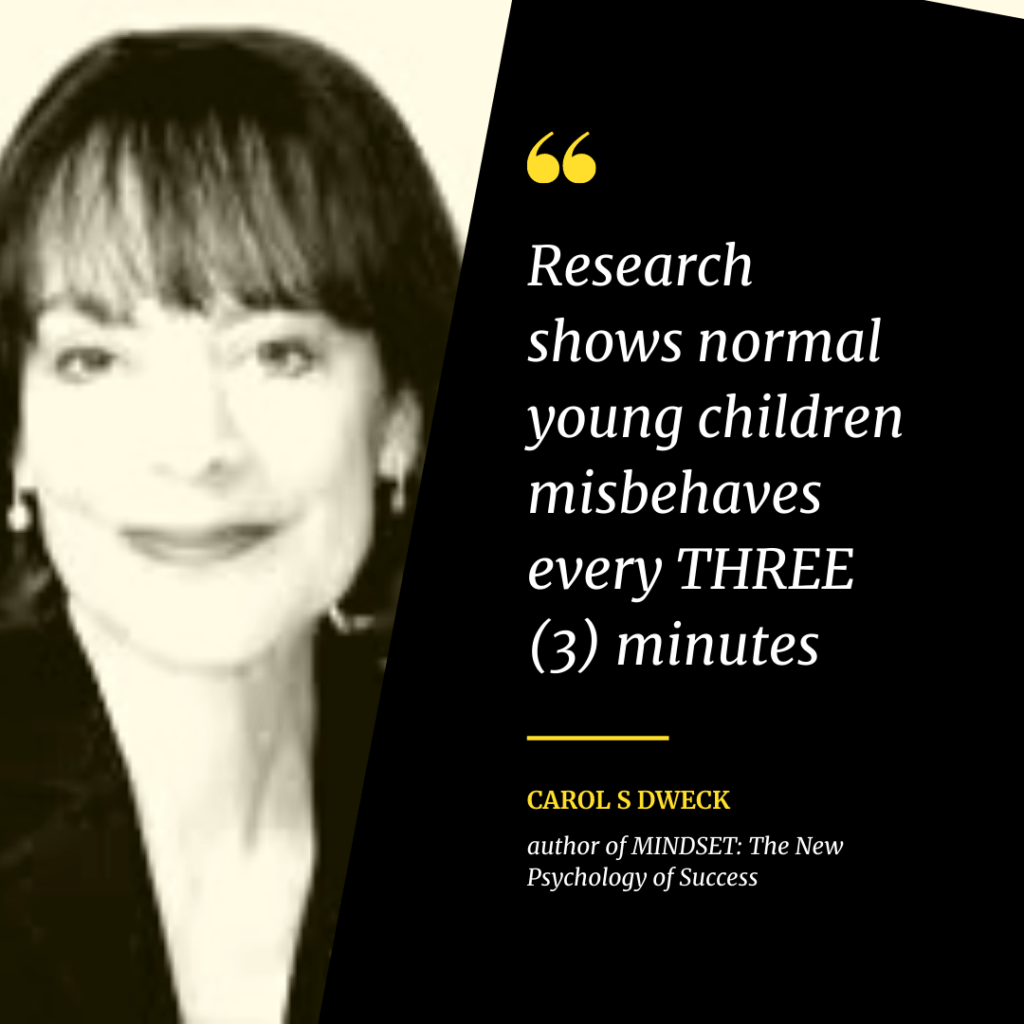
Young children are growing and developing their social-emotional skill. Parents can be “pushed” to limit to watch over your child to keep them out of mischiefs. However, according to Carol Dweck, a Lewis and Virginia Eaton Professor of Psychology at Stanford University who is renowned for her work on growth mindset states that normal young children misbehave every three minutes.
Having said that, we have an opportunity to help our children learn every three minutes. These opportunities are great to help establish boundary and expectations that we require of our children.

Why do children have challenging behavior?
Challenging behavior is deemed as behavior that is either a challenge for others to manage and/or puts a person at risk. Often times, parents are concerned with safety of their child, thus put in restrictions on what and how the child behaves. However, our children need to learn what is acceptable or not. When the behaviors are not corrected or the child has a need to be met, the challenging behavior persists.

These are some possibly “reasons” for challenging behavior:
- Attention – Your child wants your acknowledgment or be noticed by you
- Avoidance – Your child may want to avoid certain task, activity or responsibility
- Request – Your child may want certain thing, food, activity, YouTube, etc.
- Sensory – It feels good with the behavior
- Communication – Your child is trying to express themselves
- Discomfort – Your child is communicating their discomfort
Strategies to Improve Behavior
Strategies to improve your child’s behavior do depends on your child’s age and development. Younger children requires more demonstration or visual assistance when compared to older children. Children who can speak and understand words requires less instruction and intervention.
There are some precursors to addressing behavior. It is important that you set the tone that the behavior is unacceptable, not the child. In addition, the behavior must be addressed immediately, not 10 minutes after nor requesting another adult to address the unacceptable behavior when the child gets home.
Here are some strategies that may assist on improving your child’s behavior:
- Time out: Most children understands the time-out concept. However, you must explain to your child why you are putting him or her on time-out. It defeats the purpose of time-out if the child is not aware why he / she was put on it. Furthermore, you must make it clear which behavior you are trying to address. Time out is for a good reflection opportunity. Duration of the time out should not exceed your child’s ability to stay in place e.g. a 2-year old – 2 minutes while a 5-year old – 5 minutes, or shorter when the child demonstrate their ability to reflect and share with you their thoughts and choice of next action.
- Options: When a child demand for something that you are not willing to give, provide them with options that are acceptable for you. If he / she asked for screen time, state your condition – for 10 minutes or 1 episode of a show. When you provide options to your child, it empowers them, gives them the opportunity to stay in control and the need for negative behavior will reduced.
- KISS: Keep it short and sweet. Parents use words excessively, at times. For younger children who have yet to acquire the amount of vocabulary, it can be daunting for them to understand you. When you want to address a certain behavior, make it OBVIOUS. State the behavior such as “Screaming is unacceptable. Please use normal voice.” instead of “How many times to do I need to tell you to stop screaming?”
- Role play: Children love to play and it is a good way to spend time with your child. In addition, you get to go into their world, understand their need and their thoughts. You can have a few scenarios laid out, draw a lot, and role-play the scenario. It can range from going to washroom, new school, meeting new friends, eating with utensils, playing with other children, etc. Furthermore, you can include the behavior that you want to address in the role-play and walk it through with your child how he or she is expected to respond.
When do you need more help?
If the behavior does not improve despite consistent implementation of strategies and approach, your child may need further assistance. If your child exhibits harming behavior or behavior due to sensory issues, do seek professional help – doctors, occupational therapists, etc.
Read further on how to manage your child behavior at home from Child Mind Institute or our Simple ways to manage behaviors at home.
Or, get in touch with us!